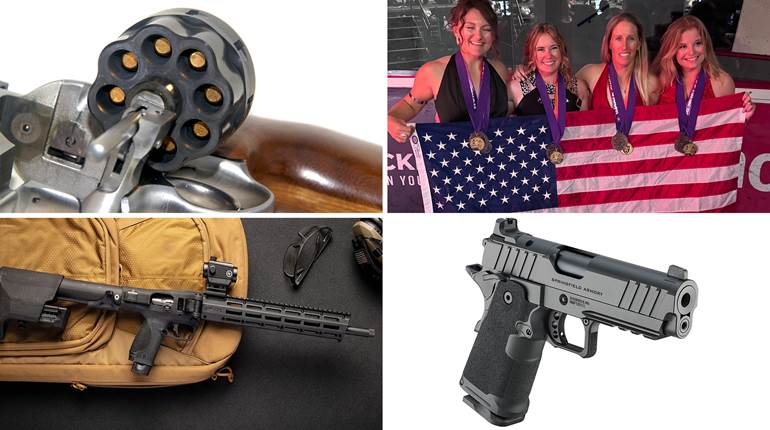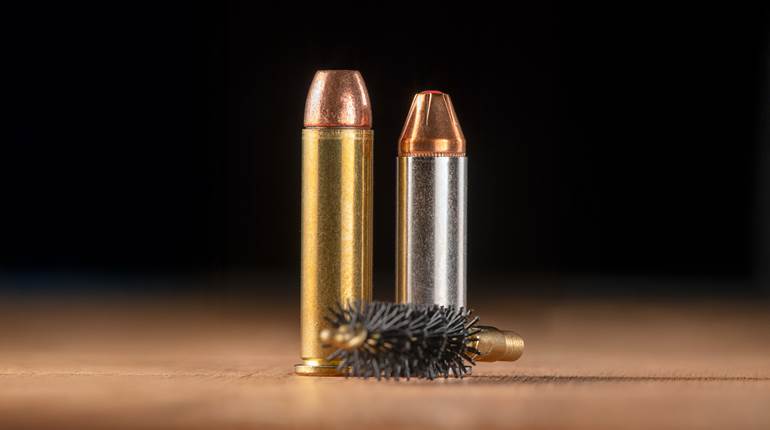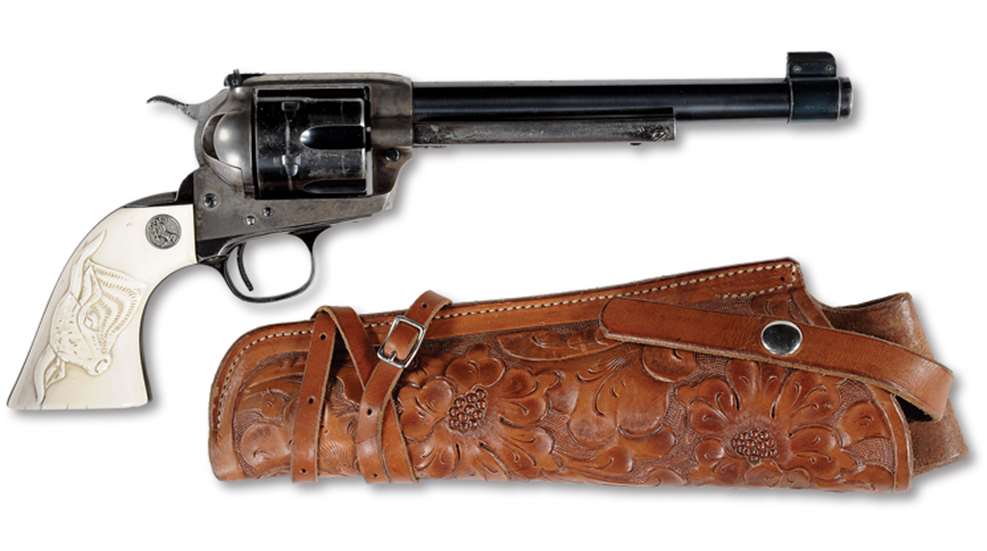
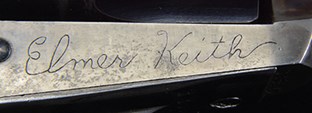 At first glance, it would be easy to misconstrue this well-used first-generation Colt Single Action Army (SAA) as just another buggered-up sixgun that some early 20th century “gun nut” (as they often called themselves) experimented on. After all, during those post-World War I years, the SAA was basically looked upon as a relic from the Wild West that had become trampled in the stampede of modern double-action revolvers and semi-automatic pistols.
At first glance, it would be easy to misconstrue this well-used first-generation Colt Single Action Army (SAA) as just another buggered-up sixgun that some early 20th century “gun nut” (as they often called themselves) experimented on. After all, during those post-World War I years, the SAA was basically looked upon as a relic from the Wild West that had become trampled in the stampede of modern double-action revolvers and semi-automatic pistols.
 Nonetheless, certain shooters still appreciated the old Model P’s rugged action and ergonomically shaped grip. It was just such an individual who altered this 7½"-barreled version made in 1917 and chambered in .44 Russian/.44 Spl. The owner was clearly an innovative experimenter, for he had a gunsmith mill out the SAA’s grooved topstrap, and in its place affix a long-base Smith & Wesson adjustable rear sight. The shooter also replaced the front sight with a sleeved, thick blade inlaid with three silver bands for various elevations when used with the rear sight’s white-outlined square notch. The Colt’s original hammer was replaced with an offset, lowered-spur “Cockeyed Hammer” from the no-longer-existing King Gun Sight Co. of San Francisco, Calif. Likewise, the trigger was replaced with a wide, hand-checkered version. And being well ahead of its time, this SAA features a professionally altered “short stroke” hammer throw, a feature that is only now showing up on many Cowboy Action Shooting single-action replicas.
Nonetheless, certain shooters still appreciated the old Model P’s rugged action and ergonomically shaped grip. It was just such an individual who altered this 7½"-barreled version made in 1917 and chambered in .44 Russian/.44 Spl. The owner was clearly an innovative experimenter, for he had a gunsmith mill out the SAA’s grooved topstrap, and in its place affix a long-base Smith & Wesson adjustable rear sight. The shooter also replaced the front sight with a sleeved, thick blade inlaid with three silver bands for various elevations when used with the rear sight’s white-outlined square notch. The Colt’s original hammer was replaced with an offset, lowered-spur “Cockeyed Hammer” from the no-longer-existing King Gun Sight Co. of San Francisco, Calif. Likewise, the trigger was replaced with a wide, hand-checkered version. And being well ahead of its time, this SAA features a professionally altered “short stroke” hammer throw, a feature that is only now showing up on many Cowboy Action Shooting single-action replicas.
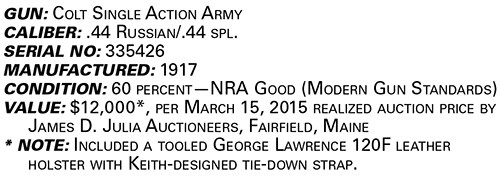 Normally, a 60-percent gun such as this, as interesting as it may be, but with a faulty action that doesn’t stay on half-cock, would bring $2,500 to $3,500, the two-piece carved ivory stocks notwithstanding. But the crudely engraved name on the right side of the frame and scratched “EMK” initials inside each stock elevate this gun to a higher status, for this is the late Elmer Keith’s “King short action job” Single Action Army, as depicted on page 103 of his book Sixguns, and which helped pave the way to the .44 Mag. Formerly on display as part of the Keith museum at Cabela’s in Boise, Idaho, the family had Keith’s guns auctioned off on March 15, 2015, by James D. Julia Auctioneers of Fairfield, Maine. This gun, fully documented by Keith’s writings and his son Ted, was estimated to sell for $3,000 to $5,000, but ended up fetching $12,000. Such is the monetary importance of a gun with provenance.
Normally, a 60-percent gun such as this, as interesting as it may be, but with a faulty action that doesn’t stay on half-cock, would bring $2,500 to $3,500, the two-piece carved ivory stocks notwithstanding. But the crudely engraved name on the right side of the frame and scratched “EMK” initials inside each stock elevate this gun to a higher status, for this is the late Elmer Keith’s “King short action job” Single Action Army, as depicted on page 103 of his book Sixguns, and which helped pave the way to the .44 Mag. Formerly on display as part of the Keith museum at Cabela’s in Boise, Idaho, the family had Keith’s guns auctioned off on March 15, 2015, by James D. Julia Auctioneers of Fairfield, Maine. This gun, fully documented by Keith’s writings and his son Ted, was estimated to sell for $3,000 to $5,000, but ended up fetching $12,000. Such is the monetary importance of a gun with provenance.













